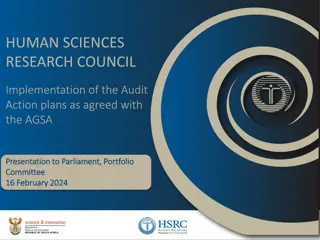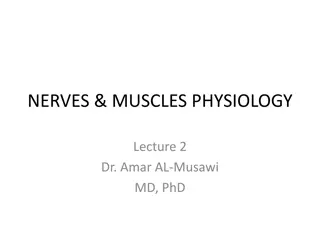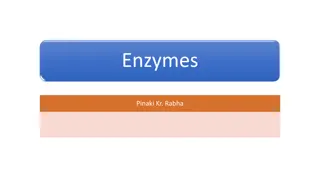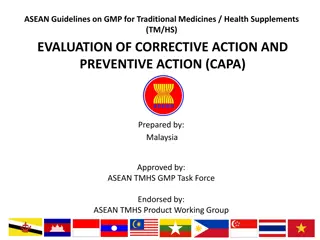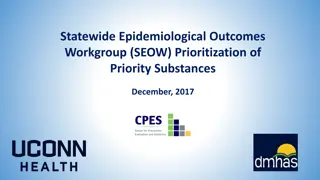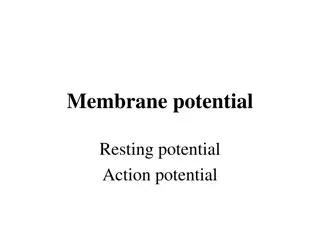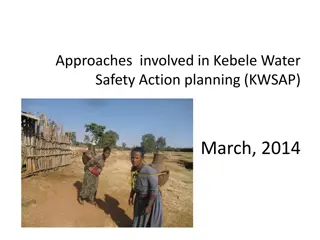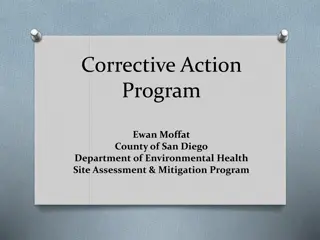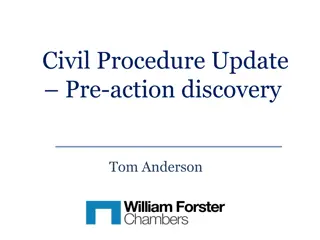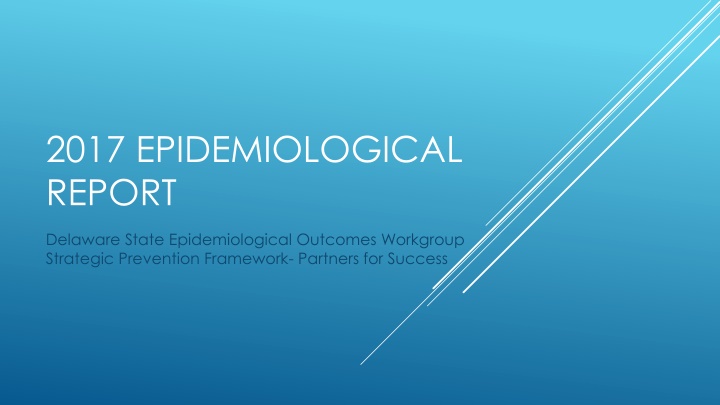
2017 Delaware Epidemiological Report: Data Insights and Strategic Prevention Framework
Explore the 2017 Delaware epidemiological report incorporating data on opioids, mental health, adverse childhood experiences, and protective factors. Learn about policy implications, health impacts, and how to use data to inform practice. Discover individual chapters for in-depth information and access the report online for detailed analysis.
Download Presentation

Please find below an Image/Link to download the presentation.
The content on the website is provided AS IS for your information and personal use only. It may not be sold, licensed, or shared on other websites without obtaining consent from the author. If you encounter any issues during the download, it is possible that the publisher has removed the file from their server.
You are allowed to download the files provided on this website for personal or commercial use, subject to the condition that they are used lawfully. All files are the property of their respective owners.
The content on the website is provided AS IS for your information and personal use only. It may not be sold, licensed, or shared on other websites without obtaining consent from the author.
E N D
Presentation Transcript
2017 EPIDEMIOLOGICAL REPORT Delaware State Epidemiological Outcomes Workgroup Strategic Prevention Framework- Partners for Success
This year the 2017 Epi. Report incorporated feed from our SEOW Members Major changes include: Introductory Narratives Local and National context New Sections That addresses specific issues Website now includes subsection for easier navigation Data in Action How to apply data to inform policy and practice CHANGES IN THE EPIDEMIOLOGICAL REPORT
This year there are 11 subsections; 9 of which have their own narrative The narratives provide the user: Local and national contexts of the topic Policy implications Health Impacts NARRATIVE
Opioids This section focuses on the use and abuse of opioids both locally and nationally Prescription Monitoring Program Mental Health Explores mental health issues in Delaware Adverse Childhood Experiences How these experience effect both mental health and substance use Protective Factors What steps parents and communities can take to protect adolescents from poor mental health and substance use NEW SECTIONS
Breaks down the epi report into individual chapters Each chapter focuses on a different topic Allows users to hone in on data pertinent to their mission Available online at: https://www.cdhs.udel.edu/seow/reports-and-products SUBSECTIONS FOR EASIER NAVIGATION
DATA IN ACTION Using Delaware data to inform policy and practice
One of the prevention interventions supported by the Strategic Prevention Framework are environmental strategies. Changes in policy or practice are environmental strategies. POLICY AS PREVENTION
Trends in Delaware students cigarette use by grade self-reported regular use, 1989-present 11th 33% 33% 8th 31% 31% 31% 5th 28% 26% 26% 26% 24%25% 25% 23%22% 23% 22% 22% 22% 20% 20%19%18% 19% 17% 16%17% 17%16%15%14% 14%13% 16%15% 14%15% 15% 12%11%12% 11% 10%9% 9% 8% 8% 8% 7% 7% 6% 6% 5% 4% 4% 4% 4% 3% 3% 3% 3% 3% 3% 3% 2% 2% 2% 2% 2% 1% 1% 1% 1% 1% 1% 1% 1% 1% 1% 1% 0% 0% 0% 0% 0% 1989 1991 1993 1995 1997 1999 2001 2003 2005 2007 2009 2011 2013 2015 Source: 2016 Delaware School Survey KEEP UP THE GOOD WORK! REDUCE YOUTH TOBACCO USE
Targeting youth about tobacco should continue to be a focus of prevention work. Avg. age of onset is 14.3 for 11th graders, 12.5 for 8th 88% of smokers report smoking before age 18; 99% before age 26 (CDC) Raise the cost of cigarettes: Raising the cost estimated to reduce smoking between 3-5% People under the age of 26 between 2-3 times more likely to be deterred from smoking due to higher prices of cigarettes (CDC). Raise the purchase age to 21: Delaware law preempts attempts by municipalities to raise the purchase age. TARGET YOUTH USE WHEN CONSIDERING INTERVENTIONS
Past Year Cigarette use vs E- cig/Vaping Device Use Past Month Cigarette use vs E- cig/Vaping Device Use 19 20 20 18 18 16 16 14 14 11 12 12 10 10 10 8 8 8 6 5 6 6 4 4 2 4 2 0 0 1 1 2 0 0 5th Grade 8th Grade 11th Grade 5th Grade Cigarette Use 8th Grade E-cig/Vaping use 11th Grade Cigarette Use E-Cig/Vaping Use Source: 2016 Delaware School Survey Nationwide, there was a 900% increase in youth use of e-cigarettes between 2011- 2015 (Surgeon s General Office, 2016). Data from the Youth Tobacco Survey in Delaware also shows an increase in youth use of e- cigarettes. Less than 15% of eleventh graders and eighth graders reported great risk in the use of e- cigarettes/vaping devices EDUCATE YOUTH ON THE RISKS OF E-CIGARETTES
Trends in Delaware 11th graders' reporting drinking and driving in the past month, 1990-2016 12% 12%12% 11% 11% 10% 10% 10% 9% 9% 8% 8% 8% 8% 8% 8% 8% 8% 8% 7% 7% 6% 6% 6% 6% 5% 5% Source: 2016 Delaware School Survey ALCOHOL USE
Social host laws hold adults accountable for underage drinking that occurs on their property, even if they did not provide the alcohol to the youth. Of youth who reported past month drinking: Nearly 1/3 of 11th graders and 1/5 of eighth graders, attended a party where parents bought alcohol within the past year (DSS). Evaluations of the implementation of social host laws have found evidence for: A reduction in drinking and driving Decrease in number of large gatherings where underage drinking occurs (University of Wisconsin, Population Health Institute, n.d.). SOCIAL HOST LAWS SHOW EVIDENCE OF REDUCTION IN UNDERAGE DRINKING AND DRIVING
Trends in Delaware students perceived great risk in using marijuana weekly 70% 60% 50% 40% 30% 20% 10% 0% 1999 50% 60% 49% 2000 51% 60% 46% 2001 47% 57% 43% 2002 47% 58% 50% 2003 50% 62% 58% Source: 2016 Delaware School Survey 2004 53% 62% 63% 2005 51% 58% 63% 2006 51% 60% 60% 2007 49% 58% 62% 2008 56% 64% 60% 2009 53% 62% 60% 2010 51% 59% 55% 2011 49% 58% 54% 2012 45% 58% 53% 2013 38% 53% 47% 2014 37% 50% 49% 2015 34% 52% 48% 2016 34% 49% 51% 11th Grade 8th Grade 5th Grade MARIJUANA: CHANGING PERCEPTIONS OF RISK
Trends in Delaware students past month marijuana use by grade self-reported regular use, 1989-present 11th grade 8th grade 5th grade 28% 27% 27% 27%26% 25% 25% 25% 25% 25% 25% 23% 23%22% 22% 22%23%24%25% 23%24% 22% 21% 19% 18% 17% 17% 16% 16%15%14% 15% 14% 13%12% 12%13%12%11%10% 10%11%12%11% 11% 12% 9% 9% 8% 8% 7% 7% 6% 5% 5% 3% 1% 1% 1% 1% 1% 1% 1% 1% 0% 0% 0% 0% 0% 0% 0% 0% 0% 0% 0% 0% 0% 0% 0% 0% 0% 0% 0% 0% Source: 2016 Delaware School Survey
The amount of THC in marijuana seized by the DEA has increased nearly 200 percent since 1995, with average levels of THC around 12% (ElSohly et al., 2016). Marijuana concentrates, can have levels of up to 75% THC (ElSohly et al., 2016; the Academies 2017). Numerous studies on brain development and marijuana use show differences in cognitive functioning between heavy users and abstainers (see: Lisdahl et al., 2013 and Gruber et al., 2017 for two reviews of the literature). It is important that we continue to keep youth informed of these risks, especially since brain development continues until the mid-20s. CHANGING PERCEPTIONS OF RISK MAY LEAD TO INCREASED USE
2005 Percent 2015 Percent Primary Drug at Admission 2005 Total 2015 Total Alcohol 2336 28% 1093 11% Heroin 2234 26% 3723 38% Cocaine 533 6% 107 1% Crack/Cocaine 943 11% 143 1% Marijuana/Hashish 1801 21% 873 9% Amphetamine 18 0% 30 0% Other Opioids & Synthetics 286 3% 643 7% Other/Missing/Unknown/None 329 4% 3265 33% State Total 8480 100.0% 9877 100% SOURCE: OFFICE OF CONTROLLED SUBSTANCES, DIVISION OF PROFESSIONAL REGULATION DE. OPIOIDS: INCREASE ACCESS TO TREATMENT SERVICES
Delaware is currently in need of expanded treatment options Two recent bills signed into law (SB 41 and HB 100) were created to address ongoing insurance disputes about inpatient treatment. Despite progress and ongoing efforts to address this, the needs exceed existing treatment resources. PROMISING SIGNS & ROOM FOR IMPROVEMENT
Nationally, up to 70% of women who enter treatment do have children (DHHS, 2016). Treatment programs that accommodate mothers with children have higher success rates with women with children, than those that do not (DHHS, 2016). Expanding treatment options that are responsive to the needs of caregivers may help improve treatment outcomes across the state. One promising program in the state is out of Connections, CSP which provides in-patient treatment for pregnant women who have been convicted of a crime, and would have otherwise been incarcerated. WOMEN IN TREATMENT
Family protective factors and past year mental health (in percentages) There are clear rules/consequences in my home? Depressed for two weeks at a time 21 36 41 Males 12 23 31 Females Self-Harm 30 11 47 17 47 22 41 36 Males 5 12 13 Females Attempt Suicide 16 5 22 9 30 12 22 21 17 Males 3 5 12 12 11 9 Females 7 12 12 5 Depressed for Two Weeks Self-Harm Attempt Suicide Stongly Agree/Agree Unsure Disagree/Strongly Disagree Source: 2015 High School Youth Risk Behavior Survey PREVENTION STARTS AT HOME
Family protective factors and past month substance use (in percentages) There are clear rules and consequences in my home? 48 35 32 28 28 25 22 20 16 16 14 12 9 8 5 Cigarettes Alcohol Binge Drinking* Marijuana Rx Stongly Agree/Agree Unsure Disagree/Strongly Disagree Source: 2015 High School Youth Risk Behavior Survey PARENTS MATTER!
The SEOW is currently working on providing interactive data maps Using data gathered at the Center and through ArcGIS Online, we are able to provide easy to use data tools: http://udel.maps.arcgis.com/apps/webappviewer/index.html?id=3 b97b0f288434e649da409c74fed5600 INTERACTIVE DATA MAPS

